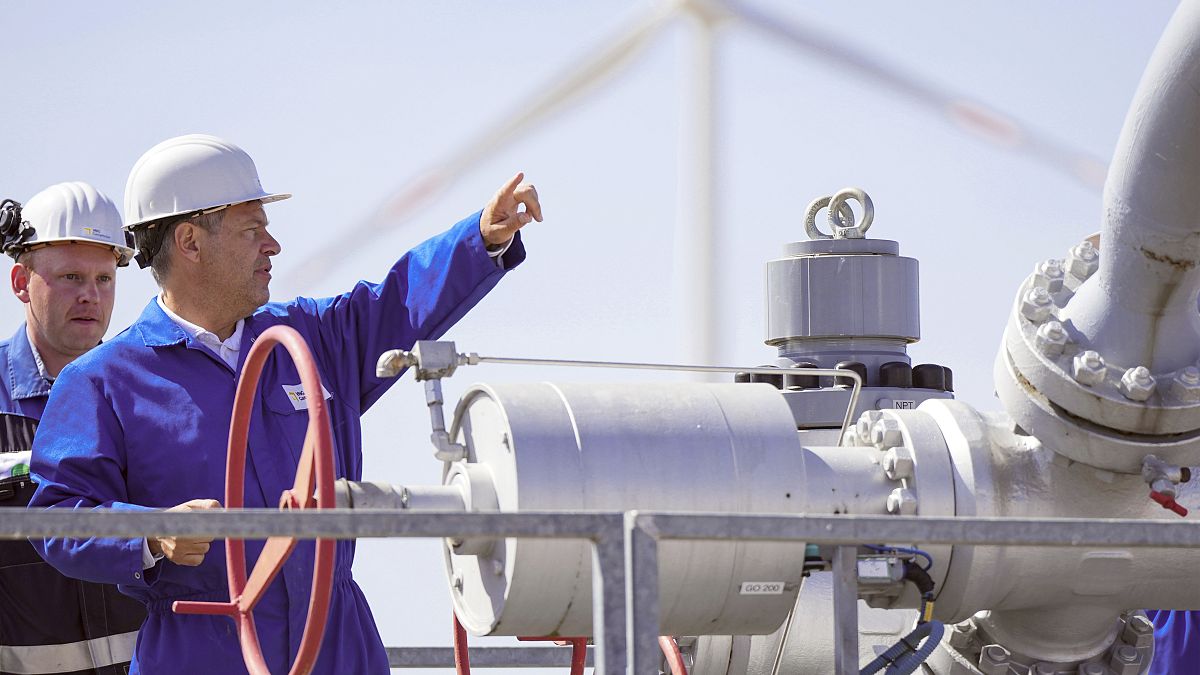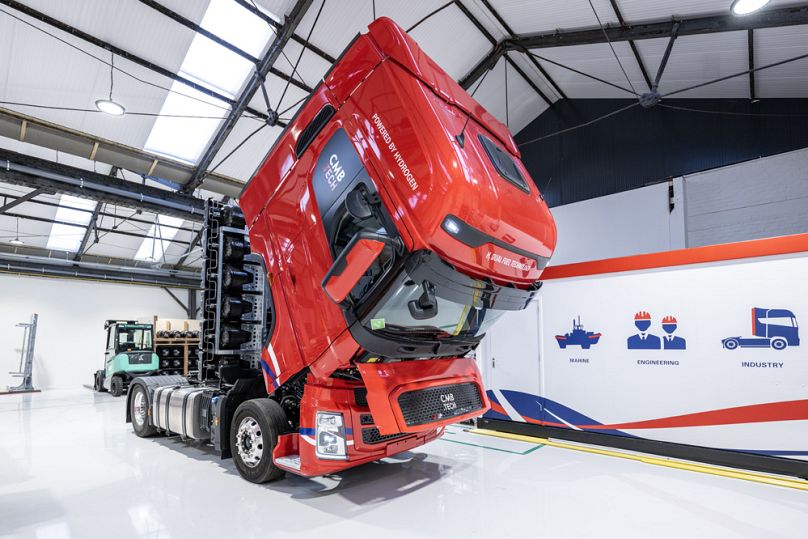The European Commission wants to produce 10 million tonnes of hydrogen per year by 2030.
Hydrogen has long been mooted as a fuel of the future, an elixir to decarbonising the EU in a cost-effective way.
Yet, despite expectations that the gas will play an important role in helping the bloc achieve its goals of being climate neutral by 2050 and cutting carbon emissions by 55% by 2030, it is still a widely unknown source of energy with very little infrastructure set up across the continent.
Currently, there are 175 hydrogen refuelling stations (HRS) throughout Europe, the majority of which are located in Germany.
Last year though, lawmakers in the European Parliament voted to build HRS every 100km along main EU roads - a formidable challenge given the infrastructure and demand for hydrogen-powered fuel cell electric vehicles (FCEVs) is still not there.
The range of FCEVs can vary between 400km and 700km, so the target of MEPs would satisfy the needs of drivers.
But there are doubts this is a viable solution towards meeting emission reduction targets in time.
A piece of the puzzle
For Roy Campe, Chief Technology Officer at CMB.TECH - a company that runs one of the few HRS in Belgium - hydrogen is not a panacea to Europe's climate issues, it is just one piece of the puzzle.
“It's part of the solution. Mainly, we need to invest massively into renewables like solar and wind," Campe told Euronews. "But the problem is that when you have solar energy, when you have wind energy, typically you don't have the consumer of that energy. Hydrogen is a perfect way to store that energy. When you are not using it, store it and you can reuse it at the time when you need it."
"Hydrogen will definitely be part of the future of fuels," he added. "We don't say it will do everything, but we believe that the majority of heavy-duty [transport] equipment will be powered by hydrogen in the future."
CMB.TECH is involved in fitting heavy-duty vehicles, like lorries, with hydrogen capability. In this case, dual-fuel technology is used, meaning the lorry can use both diesel or petrol and hydrogen fuel.
Campe says, for now, this is the way forward for these types of vehicles.
"We believe it has to start from a dual-fuel approach," he said. "With dual-fuel, you can, let's say, match the infrastructure also with the demand. Today there's less refuelling infrastructure because there is less demand and there is less demand because there is less infrastructure."
Hydrogen is also used in other sectors beyond transport, including in the production of chemical products, like fertilizers and plastics.
According to the European Commission, hydrogen accounts for 2% of Europe's current energy consumption.
However, 96% of this hydrogen is produced through dirty means, using natural gas or fossil fuels, producing a large amounts of CO2 emissions. It's why the EU wants to transition towards hydrogen produced using renewable energy.
Green hydrogen, as it is known, is made using renewable sources - like wind and solar - via electrolysis, splitting water into hydrogen and oxygen. It's then stored until it's needed.
Brussels wants to use green hydrogen to reduce emissions across all sectors, aiming to produce 10 million tonnes of it and import another 10 million tonnes by 2030.
Unrealistic expectations
But according to Professor Samuel Furfari, a chemical engineer at Free University of Brussels and European Commission official for over 36 years, producing hydrogen using renewable energy is simply not feasible on such a large scale.
"The European Commission and, indeed, the European Union Bank, want to produce 10 million tonnes per year of hydrogen, but not [just] hydrogen - hydrogen produced from wind and solar energy mainly, other renewables, but mainly wind and solar energy," Furfari told Euronews.
"[But] they have a problem with wind energy. It is intermittent and sometimes people do not need electricity when wind is blowing too much and therefore there is a huge problem in Europe. The more we install wind machines, the more we have a problem. It's why indeed the electricity price is increasing since 2008, years before the war in Ukraine."
"Making electrolysis of water is simple. All students have seen their chemistry professor doing that. But this is not an industrial way to produce hydrogen," he added.
"To produce hydrogen with electrolysis is very complicated and very energy consuming. And this is the big difference," he said. "It's why it has not existed. Nobody is doing that."
According to Furfari the best and most cost-effective way to produce hydrogen is through nuclear energy, which he said is not "politically correct today" and something the EU is unlikely to pursue in its hydrogen strategy anytime soon.

